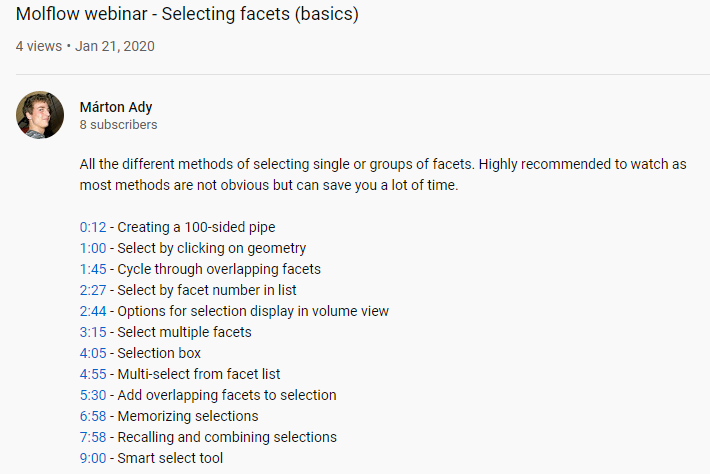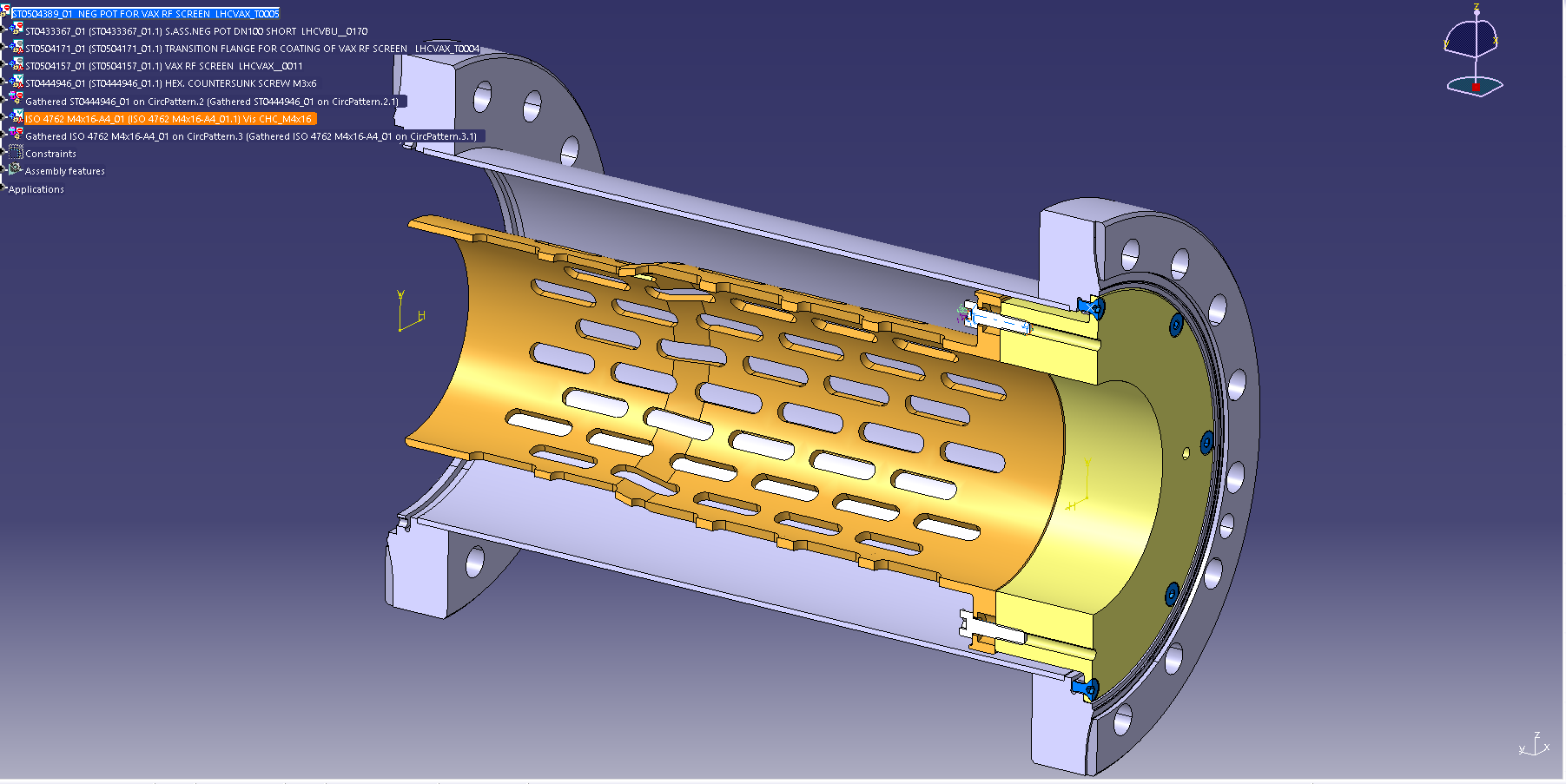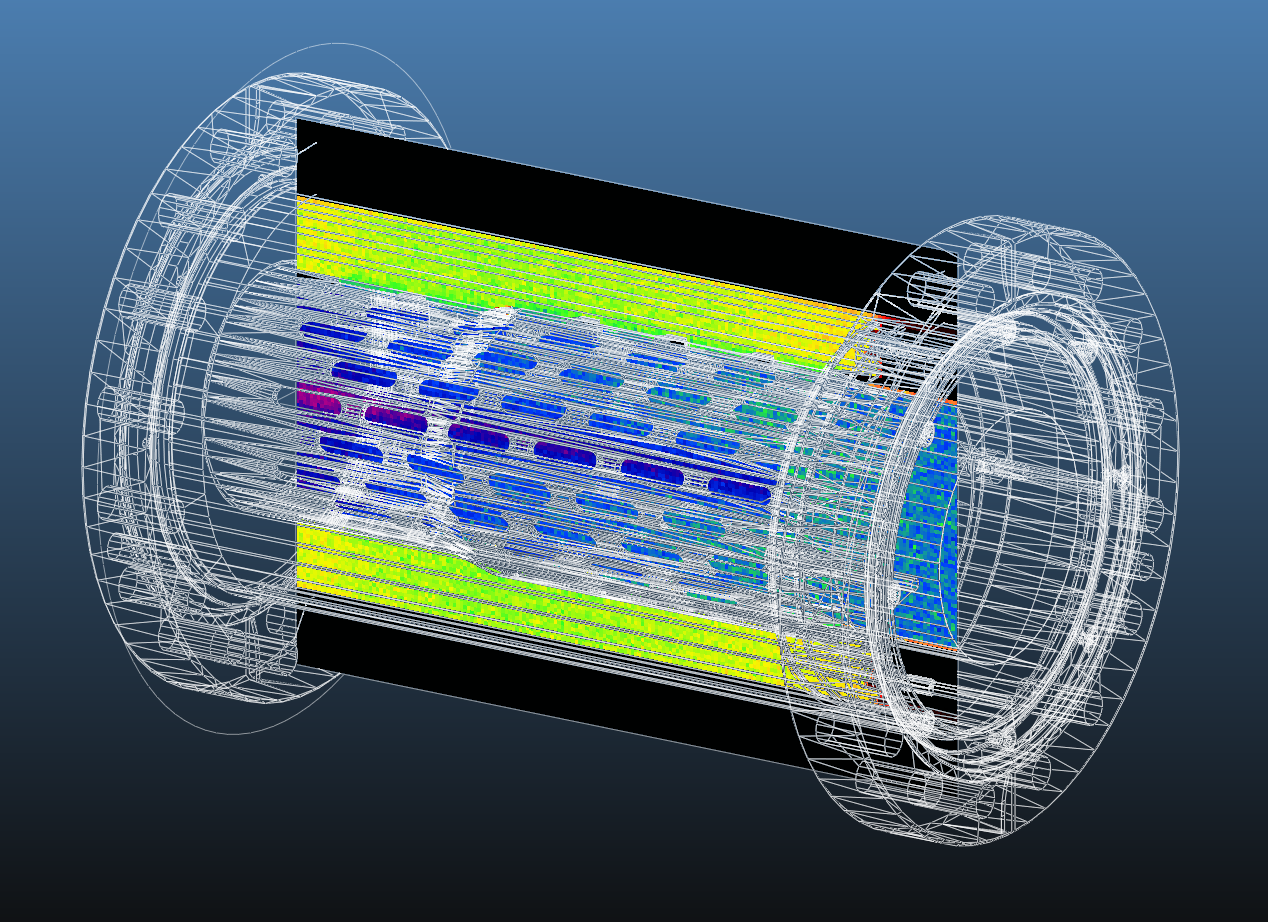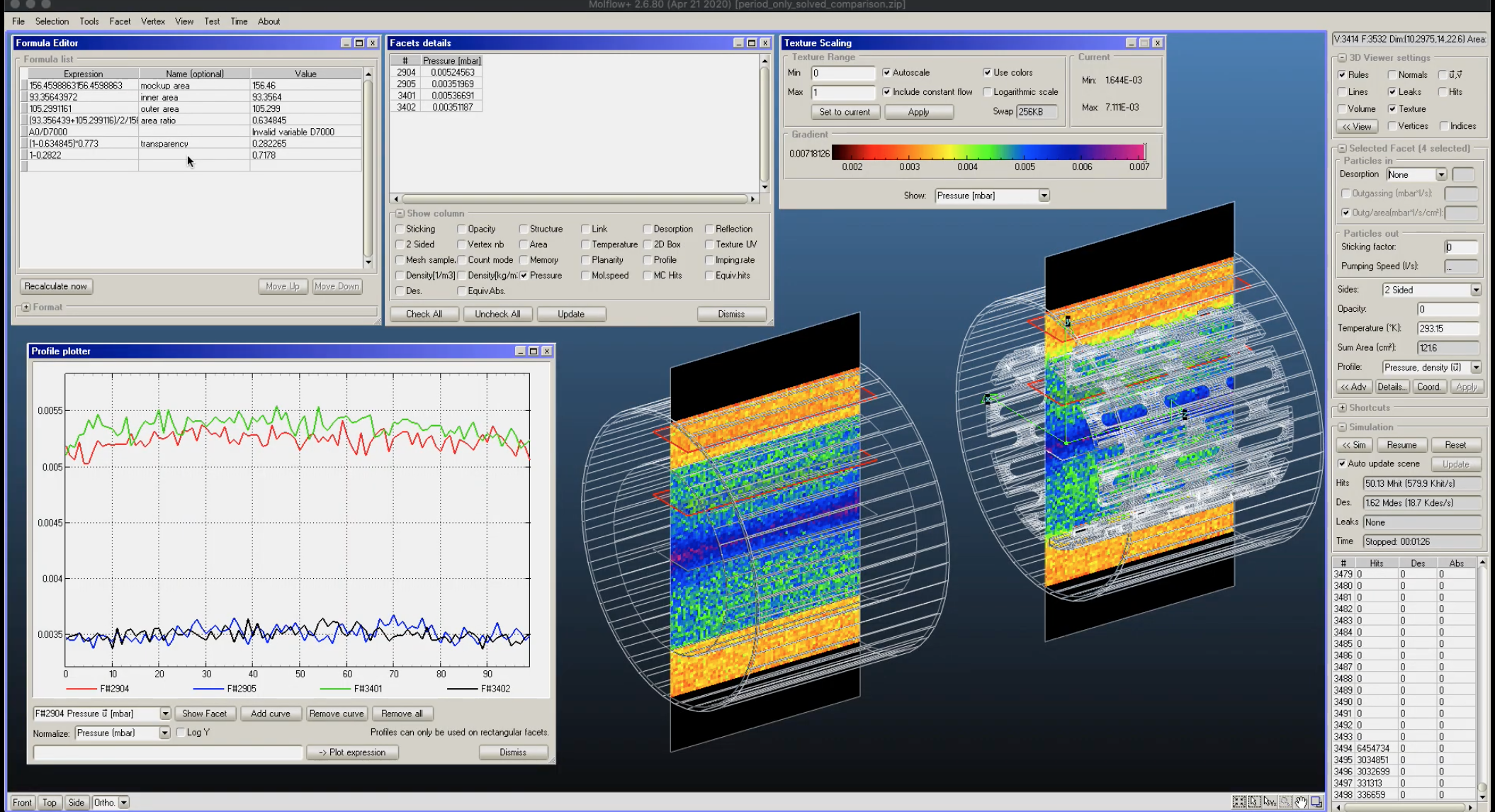MolFlow+ webinar
Bookmarks to different parts (detailed in the bullet points below) are in the video description:
There are two links for each video:
- Youtube is convenient (fast, chapter links) but has ads.
- CERN video is ad-free.
Introduction to Monte Carlo simulations
If you're new to these Monte Carlo tools, this presentation is a good overview of the special physics at very low pressures, how it's related to Monte Carlo simulations, and how Molflow actually works.
- Short explanation of the high vacuum physics
- The Monte Carlo method
- History of Molflow and Synrad
- Typical Molflow workflow
Interface basics
The interface is your first encounter with Molflow, this video shows the basic controls and also some tips and tricks.
- Loading a simple pipe
- Mouse commands (zoom, pan, rotate)
- Default views and area zoom
- View options, view parameters, light options
- Additional parts of the interface, global settings, white background
- Screenshot tool
- Toggling coordinate axes
- Advanced: 4 split views
Selecting facets (basics)
Highly recommended to watch: shows the different techniques to select facets, then memorize them as groups. Mastering these will save you a lot of time later.
- Creating a 100-sided pipe
- Select by clicking on geometry
- Cycle through overlapping facets
- Select by facet number in list
- Options for selection display in volume view
- Select multiple facets
- Selection box
- Multi-select from facet list
- Add overlapping facets to selection
- Memorizing selections
- Recalling and combining selections
- Smart select tool
Selecting facets and vertices (advanced)
Tips and tricks useful for geometry editing and large geometries where using traditional techniques are cumbersome.
- Select by number (facet id)
- Invert selection
- Select vertices
- Select in circle
- Move selection box/circle anchor
- TAB to switch facet/vertex modes
- Difference between add/remove logic
- Restrict selectable facets by Caps Lock
Create geometry with built-in tools
As opposed to importing a geometry from an external editor, you can now create your geometry from scratch. This tutorial walks you through the steps to assemble a basic vacuum system, consisting of two pumping ports and a variable diameter pipe.
- Starting with an empty geometry
- Create a circle and extrude it to a pipe
- Create a larger diameter circle at end of pipe
- Create difference of two circles
- Adding vertical pumping ports
- Rotating a circle (using an axis)
- Rotating a circle (using 2 vertices)
- Move a circle by fixed offset
- Move a circle up to an existing facet
- Mirroring a pipe to a plane
- Fixing a 0-area facet with the Collapse command
- Building T intersections between pipes
- Fixing the T intersection by scaling down vertical pipe
- Clear isolated vertices
File
ansys_geometry.zip (Result geometry)
A simple vacuum simulation
Finishing the example from the previous video by adding physics and comparing the pressure result with the published paper
- Adding outgassing
- Adding the pumps
- Setting up textures
- Setting up profiles
- Advanced: taking advantage of symmetry
Files:
ansys_geometry.zip (Source geometry)
ansys_with_physics.zip (Solved exercise)
ansys_symmetric.zip (Solved using symmetry)
Basic simulation of an RF cavity
An example of a vacuum simulation of a realistic geometry. You can get the source files from this tutorial's page.
- Importing the STL file to Molflow
- Adding outgassing
- Adding pumps
- Starting the simulation
- Adding textures (pressure color maps)
- Playing with mesh resolution
- Manual texture color scaling
- Single counter facet instead of texturing all
- Measuring distances in Molflow
- Setting counter facet parameters and texture
- Visualization techniques
- Adding a profile (pressure along a direction)
- Adding a new profile facet by scaling
- Exporting profiles and textures
- Splitting the geometry horizontally
Conductance calculations
Conductance, part 1
Theory and a simple (round pipe) example:
- Theory and formulae for conductance
- Simple round pipe example + analytic solutions
- Constructing the geometry, adding sticking and outgassing
- Using formulas to determine transmission probability
- Monte Carlo vs analytic results
- Calculating conductance from transmission probability
Conductance, part 2
Real-life CAD example
- Importing the geometry, collapsing and rotating
- Setting up pumping, desorption and sampling planes
- Creating plugs
- Starting simulation, extracting results
- Using formulas to get average pressure
- Verifying results: changing the pumping speed
- Detailed results after more simulation time
Files:
rf_geometry.stl (Geometry)
rf_solution.zip (Solution)
Treating perforated geometries
In the previous video, the perforated wall takes thousands of facets. Luckily, there's a hack to replace it with single facets and achieve a very close result.
- Constructing a replacement cylinder
- Calculating area ratio, hole transmission probability and equivalent opacity
- Replacing perforated wall with cylinder, checking results
- Double-walled version
- Real-life geometries
- Adding a temperature gradient
Files:
period_only.zip (Geometry)
mockup_ready.zip (Mockup and hole simulation)
period_only_solved.zip (Solution)
period_only_solved_doublewalled.zip (Double-walled version)
period_only_solved_comparison.zip (Side by side comparison)
Time-dependent simulations (basic)
- Acoustic delay line example
- Timewise plotter
- Pressure evolution plotter
- Time-dependent physical parameters
Files:
adl1.stl (Source geometry)
adl_timedep_outg.zip (Solved result)
Upcoming episodes
Advanced vacuum diagnostics - coming
Additional tools to get deep insight into the behavior of your system
- Angular profiles
- Direction vector textures
- Velocity profile
- Histograms
- Particle logger
Non-isothermal systems - coming
Vacuum systems with different facet temperatures
- Governing equations
- Accomodation factor
- Thermal creep example
Sequential simulations (intro) - coming
Simulating a vacuum system with a large pressure difference in multiple steps
Sequential simulations (angle maps) - coming
Recording an angular distribution and generating gas with it
Sequential simulations (superstructures) - coming
Gaining ray-tracing speed from sectioning the geometry to smaller parts
Symmetry and similarity - coming
Advanced tools taking advantage of symmetries in the system and similar structures
- Symmetry plane
- Periodic systems and teleports
- Inverse teleports
Time-dependent simulations (advanced) - coming
- Radioactive decay
- Surface sojourn time



